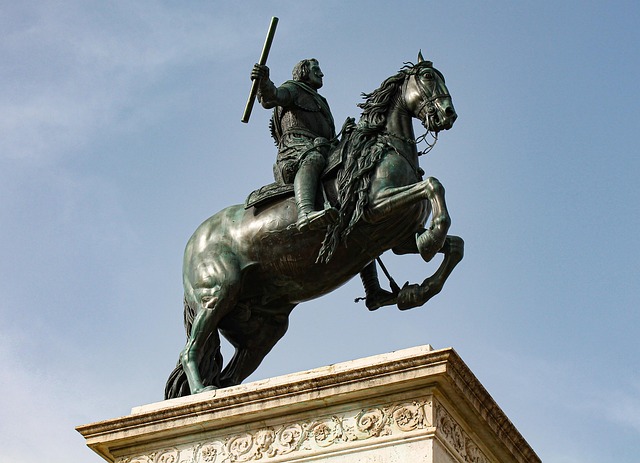# AI Art Unleashed: Discovering New Dimensions in Visual Expression Through Machine Intelligence
The intersection of artificial intelligence (AI) and art has sparked a revolutionary transformation in the visual arts landscape. Artists and technologists alike are exploring the potential of machine intelligence to expand creative horizons, leading to a new genre of art that challenges traditional notions of authorship, creativity, and aesthetic value. This article delves into the multifaceted ways AI is reshaping the art world, examining its implications for artists, collectors, and audiences.
## The Rise of AI-Generated Art
Emerging from the realms of computer science and machine learning, AI-generated art has gained significant traction in recent years. Algorithms trained on vast datasets of existing artworks can now create original pieces that mimic various styles, from classical to contemporary. Generative Adversarial Networks (GANs), for instance, have become a popular tool for artists seeking to explore the capabilities of AI. By pitting two neural networks against each other—one generating images and the other evaluating them—these systems can produce increasingly sophisticated visual outputs.
In 2018, the art world was captivated when an AI-generated painting, “Edmond de Belamy,” sold at auction for an astonishing $432,500. This event marked a watershed moment, prompting discussions around the role of AI in creative processes. The ability of AI to analyze and synthesize styles has not only democratized art creation but also enabled artists to push their own boundaries. As a result, many creators are now collaborating with AI, using it as a tool to enhance their artistic vision rather than as a replacement for human creativity.
## Redefining Artistic Authorship
The question of authorship in AI-generated art is a complex and contentious issue. Traditionally, art has been seen as a deeply personal expression of the artist’s thoughts, emotions, and experiences. However, when AI systems produce works, the lines of authorship blur significantly. Who is the true creator—the algorithm, the programmer, or the artist who provided the initial input? This ambiguity has sparked debates among art critics, legal experts, and ethicists.
Many artists have begun to embrace this ambiguity, viewing AI as a collaborator rather than a competitor. By leveraging machine intelligence, artists can explore new dimensions of creativity that were previously unimaginable. For instance, artists can input their own styles into AI systems, allowing the machines to analyze and produce variations that reflect their unique aesthetic. This collaborative approach not only enriches the creative process but also encourages artists to rethink their relationship with technology and the very nature of creativity itself.
Meanwhile, the art market is grappling with how to categorize and value AI-generated works. Some galleries and auction houses have begun to recognize AI art as a legitimate form of expression, while others remain skeptical. This evolving landscape raises important questions about the future of art valuation and the criteria by which we judge artistic merit. As AI continues to evolve, it is likely that our understanding of authorship will also transform, paving the way for a more inclusive definition of art.
## AI as a Tool for Exploration and Innovation
Beyond redefining authorship, AI is also serving as a powerful tool for exploration and innovation within the art world. Artists are increasingly utilizing AI to experiment with new forms, styles, and mediums. For instance, machine learning algorithms can analyze patterns in visual data, leading to the creation of immersive installations that engage audiences in novel ways. By integrating AI into their practice, artists can push the boundaries of traditional art forms, creating experiences that are interactive and dynamic.
One notable example is the work of Refik Anadol, whose installations use AI to transform data into stunning visual narratives. By harnessing the power of machine learning, Anadol creates immersive environments that respond to real-time data inputs, allowing viewers to engage with art in a participatory manner. This blending of technology and art not only captivates audiences but also invites them to reflect on the implications of data in our lives.
Moreover, AI has opened up new avenues for accessibility in the art world. Artists can now utilize AI tools to create art that is more inclusive and representative of diverse perspectives and experiences. By lowering the barriers to entry, AI empowers individuals who may not have had traditional artistic training to express themselves creatively. This democratization of art creation fosters a richer tapestry of voices and narratives, ultimately enriching the cultural landscape.
## Conclusion: A New Era of Artistic Expression
In conclusion, the integration of AI into the art world represents a paradigm shift in how we understand and engage with visual expression. As AI continues to evolve, it challenges traditional notions of authorship, creativity, and the role of the artist. By collaborating with machine intelligence, artists are discovering new dimensions of creativity, pushing boundaries, and redefining what art can be.
The implications of AI-generated art extend far beyond the studio. As collectors and audiences become more familiar with this emerging genre, the art market will likely adapt to accommodate these innovations. Ultimately, AI art is not merely a trend; it is a transformative force that invites us to reconsider our relationship with technology, creativity, and the very essence of what it means to create. As we stand on the brink of this new era, the possibilities for artistic expression through machine intelligence are boundless, promising an exciting future for artists and art lovers alike.

